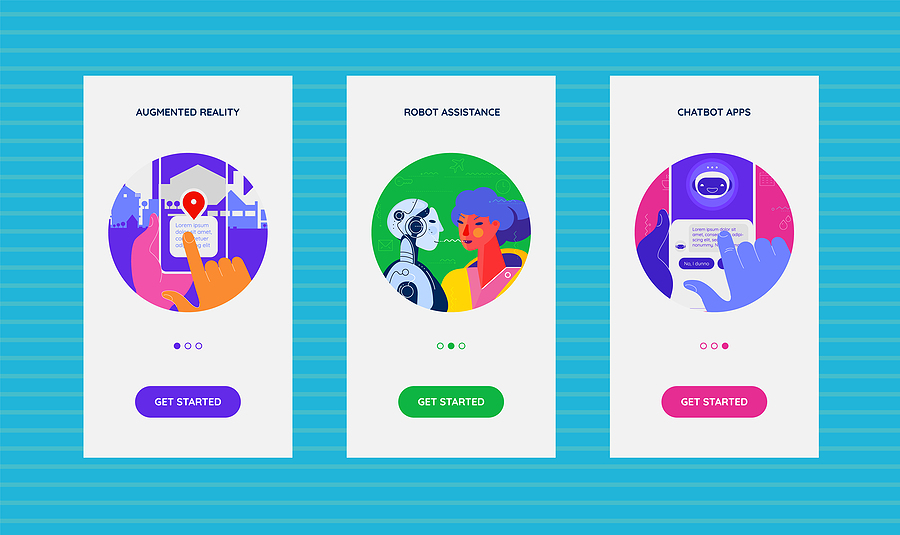
Five on Friday: Digital News, Tweeting Responsibly and Watch Parties
In this week’s Five on Friday features, we see how the coronavirus crisis continues to impact our nation. In terms of news, the Reuters Institute for the Study of Journalism reports that there has been a spike in news consumption this year, but there are also concerns about how the threat and risks of COVID-19 are being portrayed by the media. Also in Five on Friday this week, Twitter wants users to be more responsible by reading content before they retweet it, Snapchat is trying to breathe new life into the platform with new features, Hulu adds a Watch Party feature, and Entrepreneur shares ways publications can maximize revenue and yet steer clear of advertising.
40% of Americans Say They Won’t Pay for Online News
Forty percent of Americans and 50% of survey respondents in the United Kingdom say that nothing can persuade them to pay for online news. These news consumers are content with the news they can access for free and don’t see enough value to subscribe. This comes from the 2020 Digital News Report from the Reuters Institute for the Study of Journalism. The report also shares these highlights:
- The coronavirus crisis has temporarily increased news consumption, particularly via TV, online and social media.
- 60% of survey respondents said the media has helped them understand the COVID-19 pandemic; 65% agree that media has helped explain what news consumers can do; and 32% believe the media has exaggerated the impact of the coronavirus.
- 20% of Americans subscribe to the news, a 4% increase over last year.
- Of those who do subscribe, the majority only subscribe to one publication with many subscribing to The New York Times or The Washington Post.
- In most countries, local newspapers and their websites were the top source of news for a particular town or reaching, reaching four in 10 news consumers each week.
- In the U.S., 21% of news consumers access a news email each week, and almost half use it as their primary source for accessing news.
- Spotify is the #1 destination for podcasts in all markets, surpassing Apple.
- Across 40 markets, 56% of news consumers have concerns about what online news is real versus is what is fake.
- 60% of survey respondents say they prefer news that has no particular viewpoint, compared to 28% who prefer news that shares or reinforces their own viewpoint.
- In all countries surveyed, 28% of news consumers start their news journey online or through an app. Those aged 18 to 24 are twice as likely to get their news through social media.
For more data and infographics, read the Reuters’ 2020 Digital News Report here.

Snapchat Revamps Itself with New Features
Snapchat is trying to get a step above another service, WeChat. They announced a plan that could even try to take on Apple and Google. Snap, Inc. has shot for the stars before and been met with a quick fizzle. They have had a surge in usage during the coronavirus lockdown with a high demand for services like Skype, Zoom and Microsoft Teams, and their desktop application, Snap Camera, has also seen a small increase in usage. And if you are looking for a little fun the Snap Camera desktop app has a filter that makes users look like a potato – because who doesn’t need that in their daily life?

Snapchat’s newest adventure is something that seems like it’s trying to breathe life back into the social media platform. The Guardian reports that the service has grown to 229 million daily users, which surpasses Twitter, but doesn’t quite attract the audiences that Facebook and Instagram do. At their annual developer summit, Snap announced that they are in the early stage of revamping the app. They are currently working on users seeing augmented reality (AR) more regularly.
One series of tools Snapchat is working on is Scan, which will allow users to identify plants, trees and dogs, just by pointing their camera at them. If this seems familiar, Google Lens has a similar feature. Snapchat wants to make their camera the default option for most applications. CameraKit allows users to do this, and other apps don’t have to build their own fully-featured camera function, like those we have seen on Facebook and Instagram.
Snapchat has also launched Minis, which are micro-apps that are embedded into Snapchat, and can be opened without installation. The meditation app, Headspace, and a flashcard app, Tembo, are examples of things that can be integrated into Snap. Friends could buy movie passes together without having to leave Snapchat. The Motley Fool reports that people spent over $115B in mini apps on WeChat, a popular messaging app in China, in 2019. Can Snapchat compete?
Hulu Watch Party Allows Friends to Watch Shows Together
At the beginning of the coronavirus lockdowns, watching shows with your friends on Netflix was possible through a Chrome extension. Hulu took that idea and ran with it, and now you can do it through their interface. According to Hulu’s website, the new feature, which is in the testing phase, synchronizes video playback for all participants, and adds a group chat to the video being watched. You can see your friend’s reactions in real time.
Currently, Hulu Watch Party is only available to users that pay for the ad-free version of the subscription video app, and all participants must be a subscriber to this plan to use the feature. If you are on the same account as someone, you are also able to watch through different profiles.
The one flaw is that you are unable to use this feature on a television; you have to be using a supported web browser on a computer or laptop. The Verge states that users are able to individually control their playback if they need to pause, and there is also a “click to catch up” button, which will sync those with the rest of the party.
Hulu is the first video subscription company that has offered a watch party feature, so we are expecting that other video services will join in on the fun soon. HBO has started to partner with companies for more official watch party options, but has not created their own for the time being. BBC has started to build out a tool that works across its platforms, but they would not be the first to do this. Amazon allows its Prime shows to be seen in Watch Parties, so long as they are hosted by someone streaming over Amazon-owned Twitch. This allows users to see Prime content across many platforms, be it a gaming console, a Smart TV, or a phone. This gives them a leg up on Hulu, since it’s currently only on their web platform.

3 Ad-Free Revenue Ideas for Publishers

Have you ever visited a news site only to be inundated with annoying pop-up and banner ads that disrupt your experience? Some of them are so bad the sites aren’t worth staying to see what news is on their site. We are happy to see that some news publishers are opting to offer an ad-free customer experience instead. In a recent column for Entrepreneur, Simonetta Lein, founder of Wishwall, interviewed Milan Kordestani of The Doe, and they outline three ways publishers can generate revenue without advertising.
- Merchandise: Lein says that branded merchandise is a great way to initiate conversations, create loyal readers and spread brand awareness.
- Flexible payment models like pay-what-you-can subscriptions: Lein says that one-size-fits-all subscriptions don’t always make sense for publishers, especially in our current economic climate. By putting readers on the honor system, loyal readers will support publications they trust and believe in. The Guardian is a good example of this. People can do recurring donations or one-time contributions. “Support our journalism with a contribution of any size.” People can also subscribe. On every page of the site, The Guardian reiterates its value, and they proudly tell news consumers they are funded by readers. They aren’t shy, nor should they be. [Note: They do rely on some advertising income, but it is not their sole source of revenue.]
- User-generated content: The Doe offers anonymous, user-generated content. This type of content is exclusive, and it attracts readers because this content is something that can’t be found elsewhere. Personal narratives, opinion pieces and other user-generated content is a way to draw in new readers while also reducing a publisher’s expenses.
With so many companies unavailable to afford advertising during the pandemic, it makes sense to shift gears. These are great ideas for publishers to explore. For more suggestions from Lein and Kordestani, read “3 Ways Publications Can Maximize Revenue While Staying Ad-Free” on Entrepreneur.
Twitter’s Jack Dorsey Wants You to Tweet Responsibly
Have you ever retweeted an article without actually reading it? Twitter wants to know. They want Twitter users to be better informed about the content they share by reading it before hitting the “retweet” or “retweet with comment” button. Twitter co-founder and CEO Jack Dorsey asked his 4.7 million followers that very question last week – “did you read the article you’re about to spread?”
Twitter is testing this feature with Android users, reports Publishers Daily. When the user goes to retweet something that hasn’t been opened on Twitter, they user will be prompted. The overall purpose is to encourage informed discussions, not just sharing content for the sake of sharing.
“We wanted to test a way to improve the health of a conversation as it gets started. And to see if reminding people to read an article before they share it leads to a more informed discussion,” Twitter’s support team said.
The company announced the feature in a June 10 tweet from Twitter Support, which prompted 2.8K comments, many of which were not positive.

Paul Wouters (@letoams) tweeted, “Who made you god and how do you know what I am doing in my other browser tabs? Also, why are you tracking what I read?” Others reminded Twitter users that it is a private company and they set the rules. They also set the terms of service.
We understand and appreciate the concept, but it feels a little “Big Brother” to us – and we aren’t referring to Julie Chen’s “Big Brother.” It may be considered overreach by some, and a necessary step to remove bogus articles or “fake news” from the social media platform.

For more great content from Subscription Insider, follow us on LinkedIn!
- Filed in Auto-renew Subscription, Business Operations, Business Strategy, Consumer Services, Data and IoT, Entertainment and Streaming, Industry Announcements, Metered Subscription, News, Newsletters, Product Development, Revenue and Sales, SaaS and Cloud Services, Subscriber Acquisition, Subscription Apps







